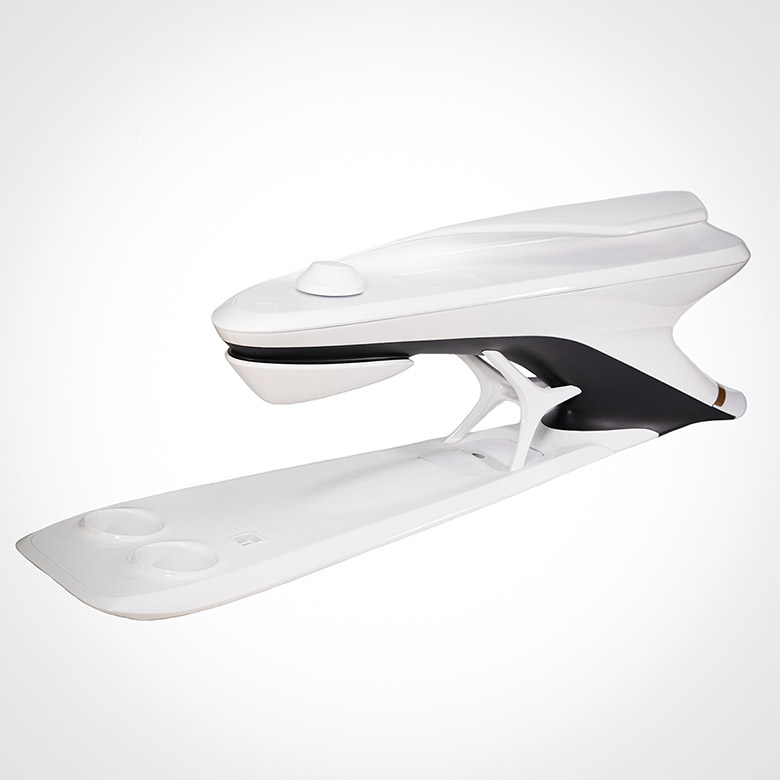Application example: Star Tracker bracket
The special product requirements
During the development of TÜRKSAT 6A, Turkish Aerospace prescribed a weight reduction for the structure of the geostationary satellite and subjected each individual structural part to appropriate optimization. One of these structural elements is the bracket for an optical measuring device known as the "star tracker", which continuously records the satellite's position in relation to the constellation of stars to determine its exact position in orbit.
Turkish Aerospace's goal for the Star Tracker bracket was to
- achieve at least 30% weight savings
- withstand 20 G in all directions during a satellite launch, and
- comply with European standards and guidelines for the aerospace industry.
At the same time, the new bracket had to be competitive from a cost perspective compared to the conventionally manufactured mount used to date.
FIT solution
Based on these requirements, FIT design experts developed a completely new design as part of an ADM-E project and optimized it until it met all component requirements.
The bracket was manufactured in aluminum (AlSi10Mg) using laser melting (PBF-LB/M), then blasted, milled on the functional surfaces, and underwent a final extensive quality control. We call this solution ADM-Q or qualified single-part manufacturing.
Would you like to learn more about the additive manufacturing of the satellite bracket?
Technical details >
Outstanding properties
By re-engineering the design and additive manufacturing the bracket, Turkish Aerospace has benefited from the following results:
- Weight reduction of just over 50% to 1.96 kg
- Successful testing of the bracket with acceleration forces of 20 G in all directions
- Compliance with European standards and directives for the aerospace industry
In addition, the complexity of the bracket was significantly reduced, as it is no longer manufactured from many individual parts, but in one piece. This has resulted in further advantages:
- No assembly effort
- No administration effort for approval, procurement, and maintenance of the individual parts
- Elimination of risks arising from the assembly of the individual parts
Under these circumstances, the cost of the additively manufactured bracket was significantly lower than that of the conventionally manufactured mount.
Turkish Aerospace found with FIT all the services from a single source that were required to develop a lightweight component from a complex and heavy structural element that meets the high demands of space travel. Mission accomplished!
Play it safe and rely on an experienced partner when it comes to your aerospace components. We are ready for you.
Send request >
This might also be interesting:
Technical details
Here you can find out all the technical details about the additively manufactured bracket.
Learn more >Innovation guide
Your indispensable compendium on all aspects of 3D printing. Here you will find everything about the various 3D printing processes, finishing options, machine data and application examples from numerous industries.
Free download >




